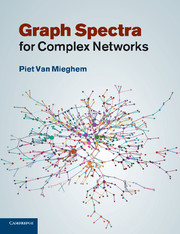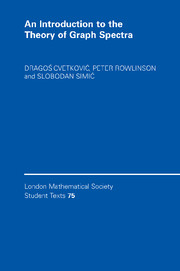Refine search
Actions for selected content:
6790 results in Communications and signal processing
Part III - Relay-based cooperative cellular wireless networks
-
- Book:
- Cooperative Cellular Wireless Networks
- Published online:
- 03 May 2011
- Print publication:
- 10 March 2011, pp 151-152
-
- Chapter
- Export citation
Part V - Standardization activities
-
- Book:
- Cooperative Cellular Wireless Networks
- Published online:
- 03 May 2011
- Print publication:
- 10 March 2011, pp 423-424
-
- Chapter
- Export citation

Graph Spectra for Complex Networks
-
- Published online:
- 01 March 2011
- Print publication:
- 02 December 2010
5 - Complex Hessian Matrices for Scalar, Vector, and Matrix Functions
-
- Book:
- Complex-Valued Matrix Derivatives
- Published online:
- 03 May 2011
- Print publication:
- 24 February 2011, pp 95-132
-
- Chapter
- Export citation
6 - Generalized Complex-Valued Matrix Derivatives
-
- Book:
- Complex-Valued Matrix Derivatives
- Published online:
- 03 May 2011
- Print publication:
- 24 February 2011, pp 133-200
-
- Chapter
- Export citation
4 - Development of Complex-Valued Derivative Formulas
-
- Book:
- Complex-Valued Matrix Derivatives
- Published online:
- 03 May 2011
- Print publication:
- 24 February 2011, pp 70-94
-
- Chapter
- Export citation
Index
-
- Book:
- Complex-Valued Matrix Derivatives
- Published online:
- 03 May 2011
- Print publication:
- 24 February 2011, pp 237-247
-
- Chapter
- Export citation
References
-
- Book:
- Complex-Valued Matrix Derivatives
- Published online:
- 03 May 2011
- Print publication:
- 24 February 2011, pp 231-236
-
- Chapter
- Export citation
Acknowledgments
-
- Book:
- Complex-Valued Matrix Derivatives
- Published online:
- 03 May 2011
- Print publication:
- 24 February 2011, pp xiii-xiv
-
- Chapter
- Export citation
1 - Introduction
-
- Book:
- Complex-Valued Matrix Derivatives
- Published online:
- 03 May 2011
- Print publication:
- 24 February 2011, pp 1-5
-
- Chapter
- Export citation
Abbreviations
-
- Book:
- Complex-Valued Matrix Derivatives
- Published online:
- 03 May 2011
- Print publication:
- 24 February 2011, pp xv-xvi
-
- Chapter
- Export citation
Nomenclature
-
- Book:
- Complex-Valued Matrix Derivatives
- Published online:
- 03 May 2011
- Print publication:
- 24 February 2011, pp xvii-xxii
-
- Chapter
- Export citation
Preface
-
- Book:
- Complex-Valued Matrix Derivatives
- Published online:
- 03 May 2011
- Print publication:
- 24 February 2011, pp xi-xii
-
- Chapter
- Export citation
Contents
-
- Book:
- Complex-Valued Matrix Derivatives
- Published online:
- 03 May 2011
- Print publication:
- 24 February 2011, pp vii-x
-
- Chapter
- Export citation
Frontmatter
-
- Book:
- Complex-Valued Matrix Derivatives
- Published online:
- 03 May 2011
- Print publication:
- 24 February 2011, pp i-vi
-
- Chapter
- Export citation
3 - Theory of Complex-Valued Matrix Derivatives
-
- Book:
- Complex-Valued Matrix Derivatives
- Published online:
- 03 May 2011
- Print publication:
- 24 February 2011, pp 43-69
-
- Chapter
- Export citation
7 - Applications in Signal Processing and Communications
-
- Book:
- Complex-Valued Matrix Derivatives
- Published online:
- 03 May 2011
- Print publication:
- 24 February 2011, pp 201-230
-
- Chapter
- Export citation
2 - Background Material
-
- Book:
- Complex-Valued Matrix Derivatives
- Published online:
- 03 May 2011
- Print publication:
- 24 February 2011, pp 6-42
-
- Chapter
- Export citation

Convex Optimization in Signal Processing and Communications
-
- Published online:
- 23 February 2011
- Print publication:
- 03 December 2009

An Introduction to the Theory of Graph Spectra
-
- Published online:
- 23 February 2011
- Print publication:
- 15 October 2009
